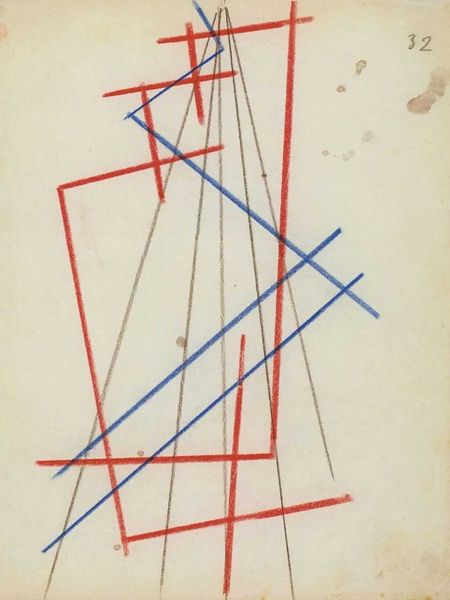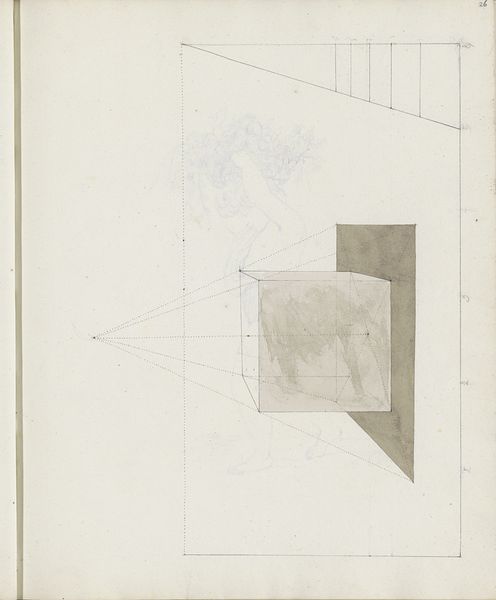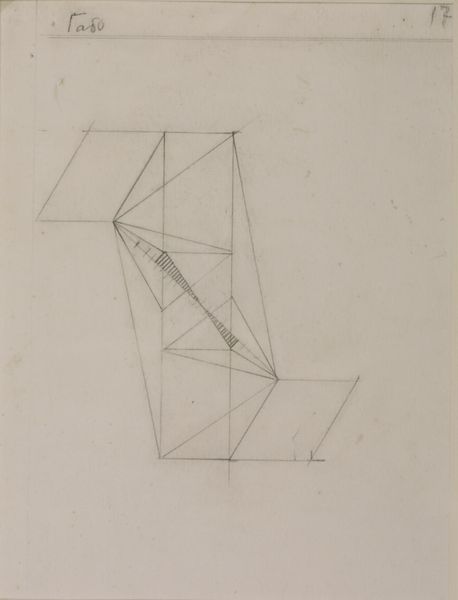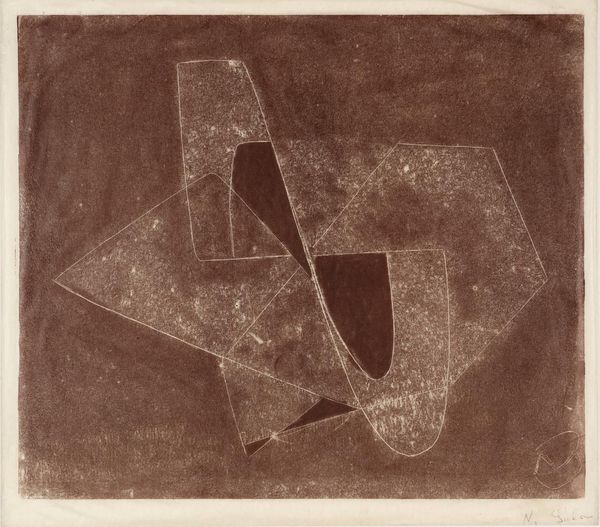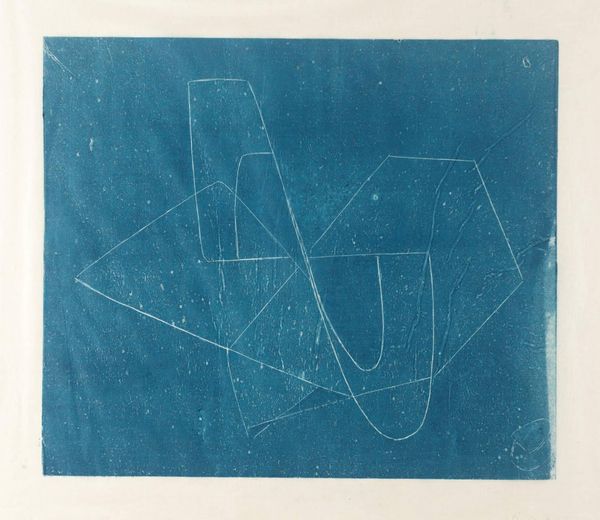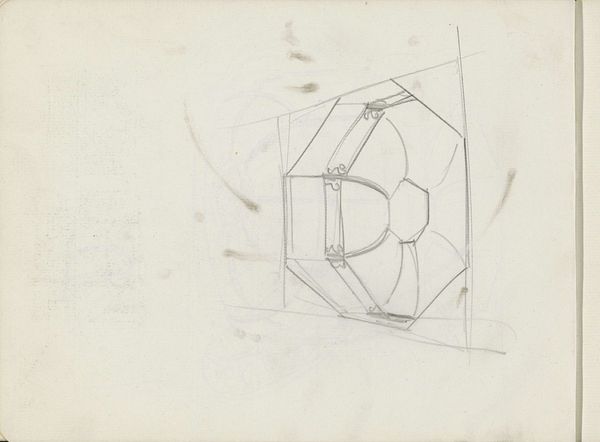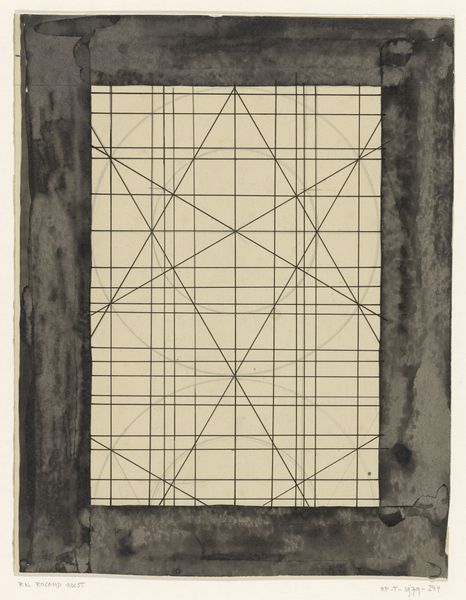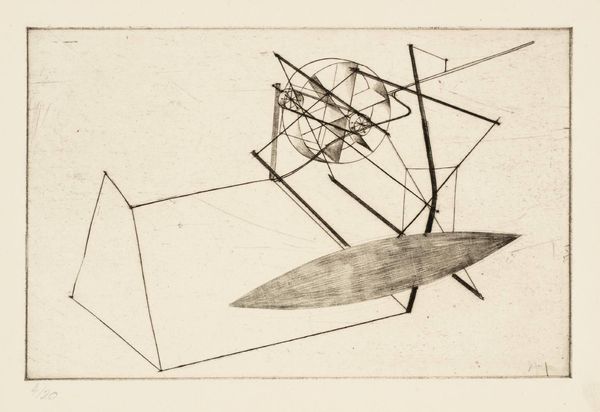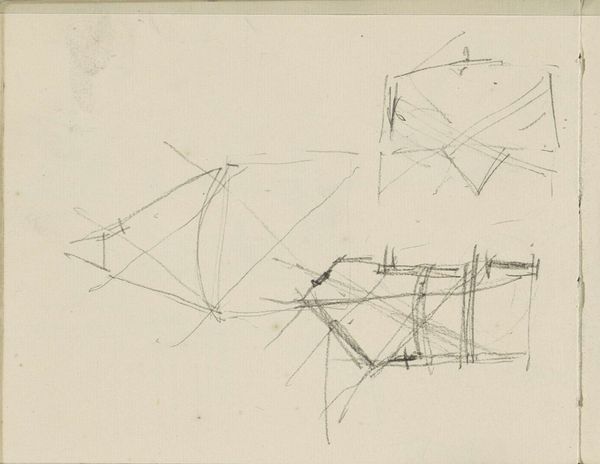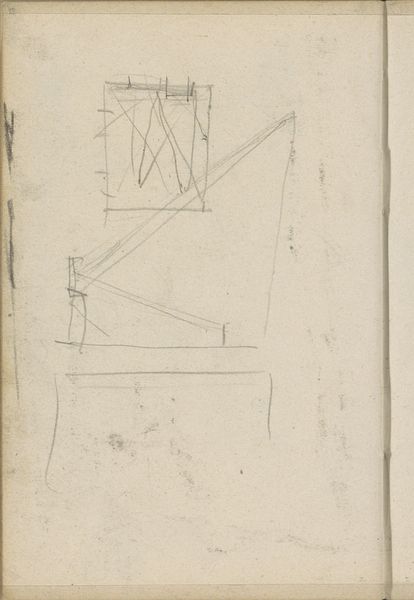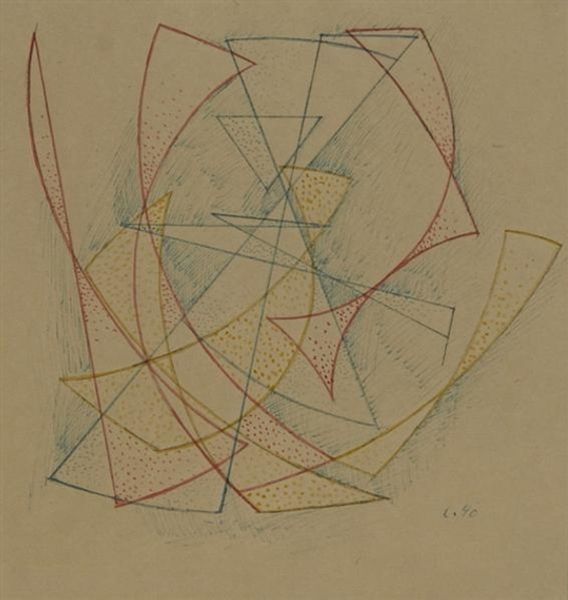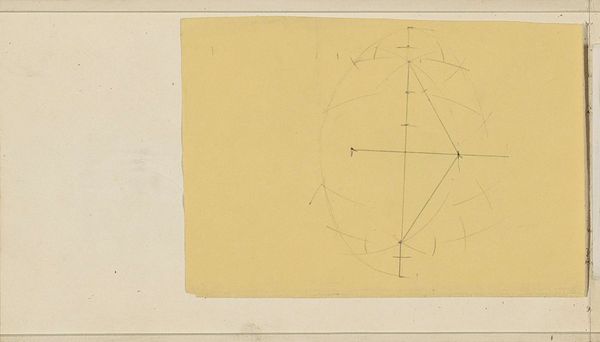
drawing
#
drawing
#
geometric
#
abstraction
#
line
Dimensions: sheet: 46 x 38 cm (18 1/8 x 14 15/16 in.)
Copyright: National Gallery of Art: CC0 1.0
Curator: This intriguing work is by Steve Keister. Created in 1983, this drawing—titled "Untitled (verso)"—presents a striking interplay of geometric abstraction through the simple medium of drawing. What strikes you about it initially? Editor: It’s the dynamic tension. Those intersecting lines in red and black, they don’t sit still. The composition vibrates. It feels like a geometric solid trying to escape the page. Curator: Indeed. Keister's work often pushes the boundaries between two and three dimensions, questioning our perception of space. Remember, the early 80s were a period of experimentation and deconstruction in art, moving away from the rigid constraints of modernism. Editor: The layering effect really amplifies that. Notice how the red lines seem to ghost around the sharper, more defined black lines. There's a play with depth and shadow using just lines and subtle shading. It teases the eye. Curator: And it is that very suggestion of volume and the allusion to complex structural forms, like a building blueprint or circuit board perhaps, which resonates within a socio-political context. Were we seeing a visual metaphor of technological expansion and the digital era looming? Editor: Possibly. Or maybe Keister is more interested in pure form. The choice of stark, primary colors is impactful, isn't it? There is something so primal about these shapes and hues rendered with this raw energy. Curator: But, what do those specific materials imply about accessibility and production during that era? Did the use of rudimentary materials impact access to arts, broadening a conversation previously dominated by more expensive modes? Editor: It all boils down to what captivates the eye. The artist manipulates these elements to create something unsettling yet elegant. Keister understands that line itself is not static; it is active, forceful. It builds structures and emotions. Curator: So it becomes not just a study of geometric forms, but a study of how abstraction reflected, refracted, or resisted societal shifts in America during the nineteen-eighties. Editor: In the end, I appreciate how Keister transforms these fundamental forms and lines into something visually and conceptually exciting. Curator: A work that leaves you contemplating its underlying influences as much as its visual language, perhaps.
Comments
No comments
Be the first to comment and join the conversation on the ultimate creative platform.


